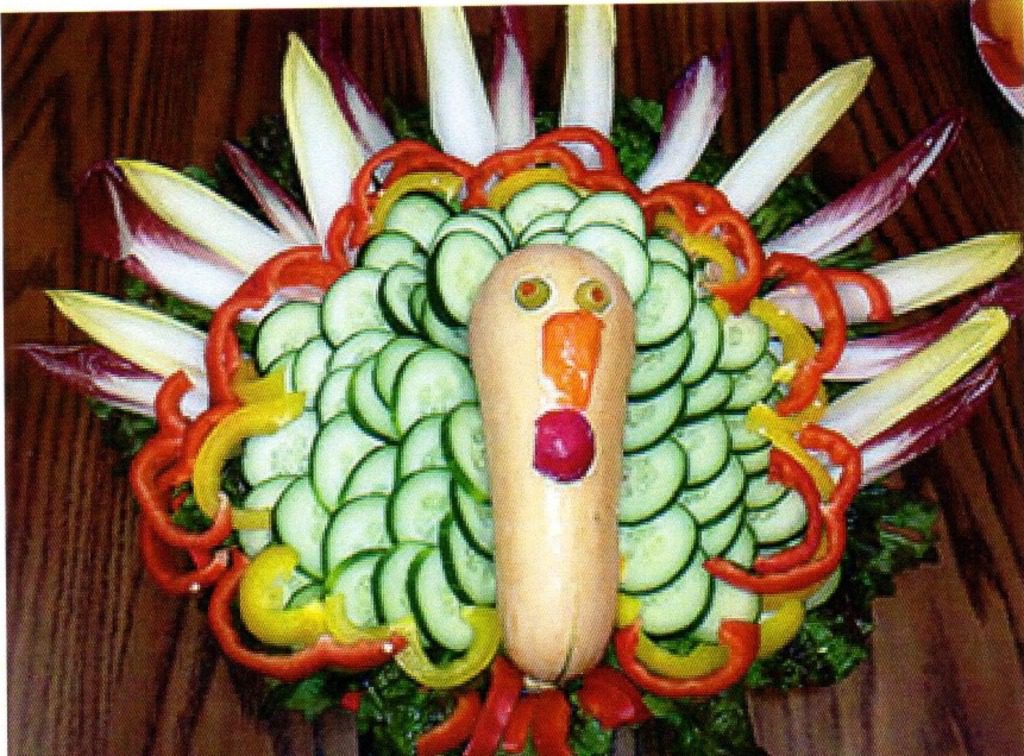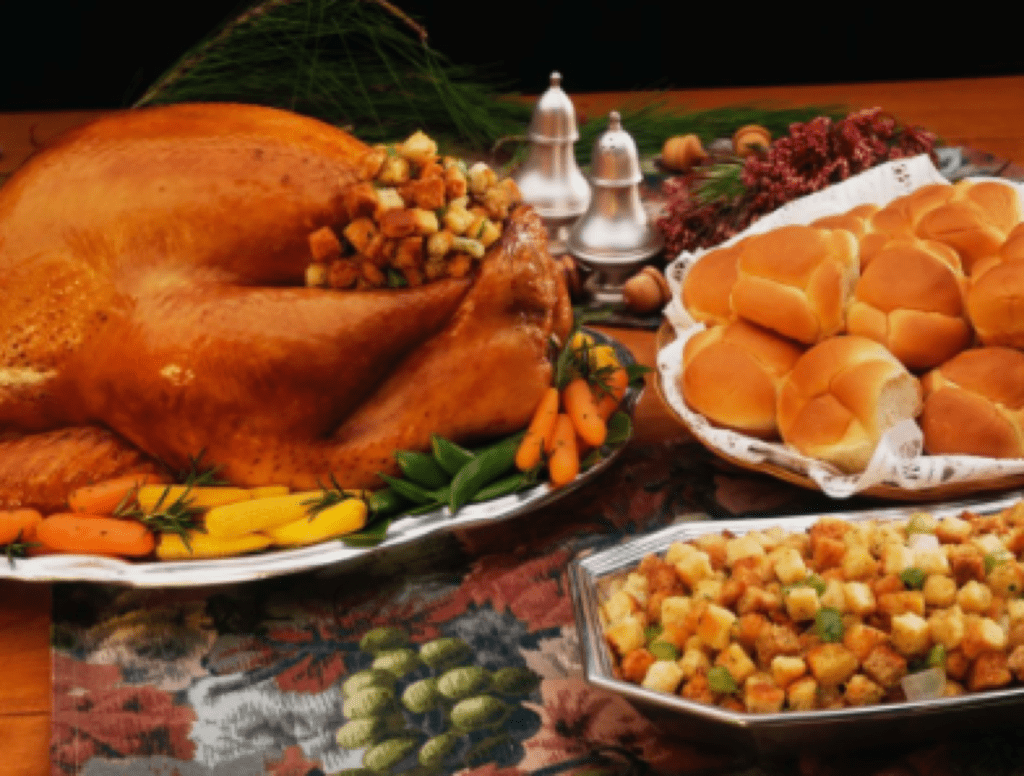Daniel Salzler No. 1125
EnviroInsight.org Six Items November 26, 2021
—————Feel Free To Pass This Along To Others——————
If your watershed is doing something you would like others to know about, or you know of something others
can benefit from, let me know and I will place it in this Information newsletter.
If you want to be removed from the distribution list, please let me know.
Please note that all meetings listed are open.
Enhance your viewing by downloading the pdf file to view photos, etc. The
attached is all about improving life in the watershed. If you want to be removed from
the distribution list, please let me know. Please note that all meetings listed are open.
Enhance your viewing by downloading the attached pdf file to view photos, etc.
The attached is all about improving life in the watershed.
Read this newsletter at EnviroInsight.org
1. HAPPY THANKSGIVING!

May all of the readers of this newsletter have a very happy and safe Thanksgiving!
2. Keep FOG Out Of The Sewers This Holiday Season. After cooking the Turkey (or other type of meat) in your peanut, soy or other vegetable oil, allow it the oil to cool before doing anything with it.
For small quantities of FOG, wipe the vessel with a paper towel or two, absorbing the liquid, and then toss into the trash.
Where do these different waste products originate?
FATS
Meat Trimmings
Uncooked Poultry Skin Cheeses
Ice Cream
Peanut Butter
Butter
**Place fats that are in excess of a quantity equal to or less than 14 ounces (a soup can) in a plastic (recycle number 3, 4, 5 or 6) container directly in the putrescible trash can for proper disposal.
OIL:
Salad dressing
Vegetable cooking oil
Canola Oil
Olive Oil
Corn Oil
**Pour used oil fats that are in excess of a quantity equal to or less than 14 ounces (a soup can) in a plastic (recycle number 3, 4, 5 or 6) container directly in the putrescible trash can for proper disposal. If allowed to go down the drain, hot water and soap do not eliminate oil; it will eventually reform in pipes.**
GREASE:
Cooked/Melted Fat from Meat Bacon/Sausage
Skin from Boiled Poultry
Gravy
Mayonnaise
Salad Dressing
**Pour liquid grease into a grease can or other container with a lid and place in the putrescible trash can once it has cooled. Running hot water over greasy cookware in the sink only pushes it into the pipes where it hardens.**
It is very important to keep all FOG products out of the sewer. FOG, or Fats Oil and Grease can clog up you sewer drains and the municipalities sewer lines. Source:http://www.gwinnettcounty.com/portal/gwinnett/Departments/PublicUtilities/PublicEducation/FOG/Hom e/FatsFOG
If you have used vegetable oil measuring in the gallon(s), try contacting companies like Dar-Pro Solutions 855-327-7761), or Baker Commodities (Toll Free: 800-825-5691).
3. Preparing Your Desert Garden Soil For Fall/Winter Vegetable Planting. If you are going to plant into the existing soil, start by watering the soil using a hose-end sprayer filled with one capful or 1/8th cup of baby shampoo (the laurel sulfate will fluff the soil). Fill the hose-end sprayer the rest of the way with apple cider vinegar (will reduce the calcium carbonate in the soil) to neutralize the soil pH.
If this is your first attempt to garden, apply at least three applications allowing at least one inch of penetration of liquid each time. An existing garden that has not received a baby shampoo/apple cider vinegar application for two years can apply the hose-end sprayer contents once. As you rototill or turn the soil with a spade, add two to three inches of compost and one half inch of gypsum. Mix well with a tiller or spade.
What you can plant right now? Go to EnviroInsight.org , menu, “Growing Your Own Food In The Sonoran Desert” for the answer.
4.Time In Arizona. Have you ever realized that sunrise and sunset on Thanksgiving day 2001 varies depending on the Arizona longitude you are at. Example:
Sunrise Sunset
Flagstaff 6:23 a.m. 5:34 p.m.
Phoenix 7:09 a.m. 5:21 p.m.
Tucson 7:11 a.m. 5:15 p.m.
Source: timeanddate.com
5.Warmer Soil Stores Less Carbon. Scientists used data on more than 9,000 soil samples from around the world, and found that carbon storage “declines strongly” as average temperatures increase.
This is an example of a “positive feedback,” where global warming causes more carbon to be released into the atmosphere, further accelerating climate change.
Importantly, the amount of carbon that could be released depends on the soil type, with coarse-textured (low-clay) soils lo sing three times as much carbon as fine-textured (clay-rich) soils.
By comparing carbon storage in places with different average temperatures, the researchers estimated the likely impact of global warming.
For every 10°C of increase in temperature, average carbon storage (across all soils) fell by more than 25%.. Read more at https://www.sciencedaily.com/releases/2021/11/211118061541.htm
6.How Long You Should Keep Thanksgiving Leftovers. It seems like everyone eats too much for Thanksgiving Dinner. It seems like there are always an abundance of food.

left when everyone pushes back from the table. First, all food should be in the refridgerator within two hours after eating.
Turkey
Keeps for: Three to four days
Cooked turkey, chicken and duck (in case you are making a turducken) will last three to four days in the fridgeaccording to Foodsafety.gov, the go-to place to get food safety information from various government health agencies.
Do: Freeze the leftovers in foil or airtight containers as soon as possible; the fresher the turkey is when it goes in, the better. They should be good for two to six months.
Don’t: Store a leftover bird with stuffing still inside; it will take too long for the stuffing to cool and bacteria could grow. Instead, take the stuffing out and save it in a separate container before refrigerating or freezing the turkey meat.
Ham
Keeps for: Three to four days
Those popular spiral-cut hams or any store-wrapped cooked ham will last three to four days in the fridge. Cooked country hams will last a bit longer, up to a week.
Do: Wrap it up tightly in plastic wrap or aluminum foil before refrigerating. If you choose to freeze, it will be good for one to two months.
Don’t: Try to save any leftover ham that has a slimy texture – that’s a tell-tale sign it’s gone bad.
Mashed and sweet potatoes
Keeps for: Three to four days
You’ll likely have made them with cream and butter, so you’ll need to put the spuds into the fridge within two hours of preparation. If stored in an airtight container, they will last three to four days in the fridge (this applies to any sort of cooked potato dish, such as potato salad or scalloped potatoes).
Do: Consider freezing your mashed potatoes or gratins in airtight containers or plastic freezer bags within three days; they should be good for up to a month.
Don’t: Freeze any leftover raw potatoes that didn’t make it to the table without blanching them first; otherwise, they’ll be watery when rejuvenated.
Stuffing/dressing and gravy
Keeps for: Three to four days
It’s all gravy: Any broth made with meat will last three to four days refrigerated and up to two months in the freezer. Same goes for that delicious dressing, if there’s any left.
Do: Store it all within two hours of making, in an airtight container. If freezing, it will keep about a month.
Don’t: Forget and leave your stuffing in the turkey. It’s a breeding ground for bacteria.
Cranberry sauce
Keeps for: 10 to 14 days
You can keep adding that delicious homemade or store-bought cranberry sauce to your sandwiches for up to two weeks if it’s been kept refrigerated in an airtight container.
Do: Refrigerate homemade cranberry sauce within two hours of cooking. If you want to make extra and freeze, it will last for up to two months.
Don’t: Touch it if there’s an off odor, flavor or appearance (especially mold).
Green bean casserole, macaroni and cheese and corn pudding
Keeps for: Three to five days
Green bean and corn casseroles and cooked pasta dishes typically last about three to five days when properly stored in the fridge. The same goes for roasted veggies, collard greens and other Thanksgiving dinner favorites.
Do: Be sure to store any dish containing mayonnaise within two hours of making or serving.
Don’t: Freeze any macaroni salad (or egg, chicken, ham or tuna salads), says the USDA. They just don’t taste good when they come back to life.
Bread, rolls and croissants
Keeps for: About a week
Do: Keep your leftover rolls and other Thanksgiving day breads wrapped in plastic in the pantry; they should be good for a week. To last longer, wrap tightly in foil and place in a freezer bag for up to three months.
Don’t: Put breads into the fridge to help them last longer, they’ll just dry out.
Pumpkin, pecan, fruit pies
Keeps for: Three to four days
Pumpkin and pecan pies – or any other pie with an egg-based filling, such as chocolate pie – will keep for three to four days if refrigerated within two hours of making or serving.
Fruit pies can sit out for two days before you cut and serve them. After eating, loosely wrap with foil or plastic before you put the pie in the fridge.
The rule applies to store-bought pies as well – once you’ve cut it, it needs to refrigerated.
Do: Consider freezing pumpkin, pecan and fruit pies. Wrapped tightly in foil or plastic they will keep for almost three months. Defrost before warming to eat.
Don’t: Freeze any ‘airy’ pies such as custard or chiffon.
Cakes and pastries
Keeps for: Up to a week in the fridge
Cakes and pastries can actually be left at room temperature on the snacking table for up to two days; you’ll want to cover loosely with plastic wrap to keep them moist. Put into the fridge, they’ll stay fresh for up to a week.
Do: Keep slices to snack on by freezing in airtight containers; they will last two to three months.
Don’t: Keep any cakes or pastries with dairy-based frostings or fillings out on the table after dessert. They need to go immediately into the fridge.
Source: https://www.cnn.com/2019/11/29/health/how-long-to-keep-thanksgiving-leftovers-wellness/index.html
Copyright EnviroInsight.org 2021
